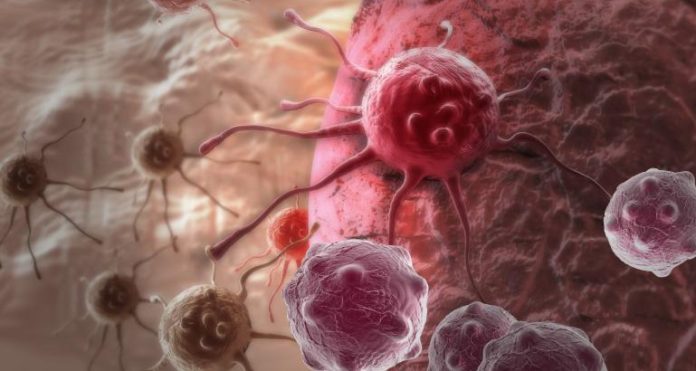
An international team of researchers have just discovered a protein that encourages breast cancer to spread to the bone — a finding that scientists say could pave the way for treatments that halt progression of the disease.
It is estimated that more than 231,000 new cases of invasive breast cancer will be diagnosed in the U.S. in 2015, making breast cancer the most common cancer among American women after skin cancer. Despite advances in detection and treatment, breast cancer remains the second leading cause of cancer death in women, exceeded only by lung cancer.
Most breast cancer deaths are caused by metastatic or secondary breast cancer, which happens when cancer cells spread from the breast tumor – the “primary site” – to other parts of the body. Most commonly, breast cancer cells spread to the bones, accounting for around 85 percent of all secondary breast cancers.
In this latest study, researchers discovered that a protein called lysul oxidase (LOX) drives the spread of breast cancer cells to the bone. The findings, published in the journal Nature, indicate that blocking the activity of LOX may be able to “halt the progression of the disease” before it metastasizes, said co-investigator Dr. Alison Gartland, of the University of Sheffield in the UK.
“This is important progress in the fight against breast cancer metastasis and these findings could lead to new treatments to stop secondary breast tumors growing in the bone, increasing the chances of survival for thousands of patients,” she said.
To reach their findings, Dr. Gartland and colleagues used mass spectrometry to analyze the protein secretion of tumors among patients with estrogen receptor negative (ER-) breast cancer. The team found that high levels of LOX, released by the breast’s primary tumor, caused holes to form in the bone of breast cancer patients as a way of preparing it for the arrival of cancer cells.
“We show that these lesions subsequently provide a platform for circulating tumor cells to colonize and form bone metastases,” the authors explain
In another arm of the study, the researchers found that introducing LOX to tumor-free mice also led to bone damage. However, when they administered a drug called bisphosphonate — which is already used to treat bone diseases such as osteoporosis — they were able to completely prevent the bone damage. As such, the authors suggest that administering similar treatments to patients with breast cancer could stop the disease from spreading to the bone.
Co-author Dr. Janine Erler, of the University of Copenhagen in Denmark, expressed optimism that this finding could lead to improved prognosis for patients with cancer in the long run.
“Once cancer spreads to the bone it is very difficult to treat,” she explained. “Our research has shed light on the way breast cancer cells prime the bone so it is ready for their arrival. If we were able to block this process and translate our work to the clinic, we could stop breast cancer in its tracks thereby extending patients’ lives.”
The researchers say their next step is to determine how LOX interacts with bone cells to drive cancer metastasis, which will bring us closer to finding drugs that stop the process. “This could also have implications for how we treat other bone diseases too,” adds Dr. Gartland.
